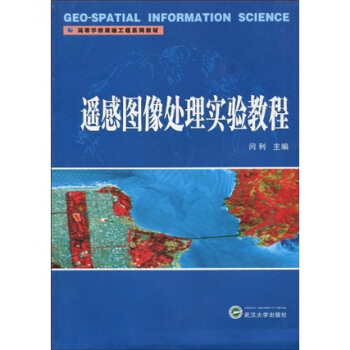![有界解析函数(修订版)(英文版) [Bounded Analytic Functions]](https://pic.tinynews.org/10104518/e95b46c9-9714-4ded-b7d5-388fe66e86f7.jpg)
有界解析函数(修订版)(英文版) [Bounded Analytic Functions] pdf epub mobi txt 电子书 下载 2025
- Complex Analysis
- Analytic Functions
- Bounded Functions
- Mathematical Analysis
- Operator Theory
- Function Spaces
- Holomorphic Functions
- Approximation Theory
- Potential Theory
- Harmonic Analysis

具体描述
内容简介
This edition of Bounded Analytic Functions is the same as the first edition exceptfor the corrections of several mathematical and typographical errors. I thank themany colleagues and students who have pointed out errors in the first edition.These include S. Axler, C. Bishop, A. Carbery, K. Dyakonov, J. Handy, V. Havin, H.Hunziker, E Koosis, D. Lubinsky, D. Marshall, R. Mortini, A. Nicolau, M. ONeill,W. Rudin, D. Sarason, D. Suarez, C. Sundberg, C. Thiele, S. Treil, L Uriarte-Tuero,J. Vaisali, N. Varopoulos, and L. Ward.内页插图
目录
PrefaceList of Symbols
Ⅰ. PRELIMINARIES
Schwarzs Lemma
Picks Theorem
Poisson Integrals
Hardy-Littlewood Maximal Function
Nontangential Maximal Function and Fatous Theorem
Subharmonic Functions
Notes
Exercises and Further Results
Ⅱ. Hp SPACES
Definitions
Blaschke Products
Maximal Functions and Boundary Values
(1/π) f(log |f(t)l/(1 + t2))dt > - ∞
The Nevanlinna Class
Inner Functions
Beurlings Theorem
Notes
Exercises and Further Results
Ⅲ. CONJUGATE FUNCTIONS
Preliminaries
The Lp Theorems
Conjugate Functions and Maximal Functions
Notes
Exercises and Further Results
Ⅳ. SOME EXTREMAL PROBLEMS
Dual Extremal Problems
The Carleson-Jacobs Theorem
The Helson-Szeg6 Theorem
Interpolating Functions of Constant Modulus
Parametrization of K
Nevanlinnas Proof
Notes
Exercises and Further Results
Ⅴ. SOME UNIFORM ALGEBRA
Maximal Ideal Spaces
Inner Functions
Analytic Discs in Fibers
Representing Measures and Orthogonal Measures
The Space Ll/Hd
Notes
Exercises and Further Results
Ⅵ. BOUNDED MEAN OSCILLATION
Preliminaries
The John-Nirenberg Theorem
Littlewood-Paley Integrals and Carleson Measures
Feffermans Duality Theorem
Vanishing Mean Oscillation
Weighted Norm Inequalities
Notes
Exercises and Further Results
Ⅶ. INTERPOLATING SEQUENCES
Carlesons Interpolation Theorem
The Linear Operator of Interpolation
Generations
Harmonic Interpolation
Earls Elementary Proof
Notes
Exercises and Further Results
Ⅷ. THE CORONA CONSTRUCTION
Inhomogeneous Cauchy-Riemann Equations
The Corona Theorem
Two Theorems on Minimum Modulus
Interpolating Blaschke Products
Carlesons Construction
Gradients of Bounded Harmonic Functions
A Constructive Solution of
Notes
Exercises and Further Results
Ⅸ. DOUGLAS ALGEBRAS
The Douglas Problem
Hoo + C
The Chang-Marshall Theorem
The Structure of Douglas Algebras
The Local Fatou Theorem and an Application
Notes
Exercises and Further Results
Ⅹ. INTERPOLATING SEQUENCES AND MAXIMAL IDEALS
Analytic Discs in 99l
Hoffmans Theorem
Approximate Dependence between Kernels
Interpolating Sequences and Harmonic Separation
A Constructive Douglas-Rudin Theorem
Notes
Exercises and Further Results
BIBLIOGRAPHY
INDEX
前言/序言
This edition of Bounded Analytic Functions is the same as the first edition exceptfor the corrections of several mathematical and typographical errors. I thank themany colleagues and students who have pointed out errors in the first edition.These include S. Axler, C. Bishop, A. Carbery, K. Dyakonov, J. Handy, V. Havin, H.Hunziker, E Koosis, D. Lubinsky, D. Marshall, R. Mortini, A. Nicolau, M. ONeill,W. Rudin, D. Sarason, D. Suarez, C. Sundberg, C. Thiele, S. Treil, L Uriarte-Tuero,J. Vaisali, N. Varopoulos, and L. Ward.I had planned to prepare a second edition with an updated bibliography and anappendix on results new in the field since 1981, but that work has been postponed fortoo long. In the meantime several excellent related books have appeared, includingM. Andersson, Topics in Complex Analysis; G. David and S. Semmes, SingularIntegrals and Rectifiable Sets in Rn and Analysis of and on Uniformly Rectifi-able Sets; S. Fischer, Function theory on planar domains; P. Koosis, Introductionto Hp spaces, Second edition; N. Nikolski, Operators, Functions, and Systems;K. Seip, Interpolation and Sampling in Spaces of Analytic Functions; and B. Simon,Orthogonal Polynomials on the Unit Circle.
用户评价
这本书的书名,"有界解析函数(修订版)(英文版) [Bounded Analytic Functions]",本身就透露出一种严谨而深邃的数学气息。我是一个刚开始涉足复变函数领域的学生,在导师的推荐下购买了这本书。当我翻开它时,立刻被扉页上那行简洁却充满力量的英文所吸引。书的纸张触感温润,字体清晰,排版也十分考究,这些细节都预示着这不仅仅是一本教材,更像是一件数学艺术品。我期待通过这本书,能够深入理解解析函数在有界条件下的奇妙性质,例如那些著名的刘维尔定理、施瓦兹引理等,它们如同数学王冠上的璀璨明珠,我渴望亲手去摘取。虽然我尚未开始深入研读,但仅仅是目录和前言部分,就展现了作者扎实的功底和清晰的逻辑脉络,我预感这本书将成为我复变函数学习道路上一个不可或缺的指南。我尤其好奇,修订版会在原版的基础上增添哪些新的视角或更优化的论证方式,这让我对未来的学习充满了期待,仿佛即将踏上一段探索数学奥秘的精彩旅程。
评分作为一名对数学史略感兴趣的业余爱好者,我购买这本书的初衷,更多的是想从一个更广阔的视角去理解“有界解析函数”这个概念是如何在数学发展史上逐渐形成和演变的。虽然我可能无法完全消化其中的所有严谨证明,但我相信通过阅读这本书,我可以一窥数学家们是如何在抽象的数学世界中,通过巧妙的构造和严密的逻辑,一步步揭示出这些优美而深刻的性质。我希望这本书能够提供一些历史的脚注,或者穿插一些关于提出这些概念的伟大数学家的生平故事,这样我的阅读体验会更加丰富。我对于书中所使用的数学语言和符号体系充满好奇,它们背后承载着一个时代的智慧和探索。即使是最基础的概念,在这些数学大家的手中,也仿佛被赋予了生命,展现出令人惊叹的秩序和美感。我期待这本书能给我带来一次心智的洗礼,让我更深刻地体会到数学的魅力。
评分我对数学的兴趣主要集中在它与物理世界的联系,尤其是那些能够被用来描述自然现象的数学工具。在学习量子力学和广义相对论的过程中,我接触到了一些涉及复数和解析函数的概念,并且了解到在某些物理模型中,函数的“有界性”是一个非常重要的约束条件,它直接关系到物理量的可观测性或者系统的稳定性。这本书的书名,"有界解析函数",恰好触及了我非常感兴趣的交叉领域。我希望这本书能够清晰地阐述,数学上的“有界性”在物理学中是如何被理解和应用的,例如在量子态的表述、场论的正则化等方面。我期待书中能有一些生动的例子,将抽象的数学概念与具体的物理现象联系起来,从而帮助我更好地理解这些物理理论背后的数学本质。即使某些证明过程对我来说稍显晦涩,但我相信,通过对书中思想的领悟,我能够更深刻地理解物理世界的运行规律。
评分我是一位研究复变函数理论多年的科研人员,偶然间注意到这本书的修订版出版。我对“有界解析函数”这个专题一直有着浓厚的兴趣,因为在许多分析和几何问题中,有界性往往是导出强大结论的关键。这本书的英文原版在我之前就已有所耳闻,以其内容的深度和论证的严谨性著称。此次修订版的出现,无疑为我提供了更新、更全面的学习资料。我初步浏览了一下目录,发现它涵盖了从基础概念到高级应用的广泛内容,并且似乎对一些经典定理进行了更深入的探讨和推广。我特别关注书中是否会涉及到一些最新的研究进展,或者是否会提供一些新的解题思路和方法,这对于我的科研工作具有极大的参考价值。这本书的出版,对于像我这样需要在该领域不断深耕的学者来说,是一份宝贵的财富,它能够帮助我们巩固基础,开阔视野,并可能激发新的研究灵感。
评分我是一名在软件工程领域工作的工程师,虽然我的日常工作并不直接涉及复杂的数学理论,但我一直坚信,扎实的数学基础是解决复杂工程问题的基石。复变函数,尤其是其中关于解析函数的性质,在信号处理、控制理论、流体力学等领域有着广泛的应用。我选择这本书,是希望能够温故而知新,特别是对于“有界解析函数”这一概念,我隐约记得它在某些优化算法和数值分析方法中扮演着重要角色。我期待通过这本书,能够找到一些将抽象数学概念转化为实际工程解决方案的线索。例如,了解有界性如何限制函数的行为,从而帮助我们在设计算法时做出更明智的选择,或者在分析系统稳定性时提供更可靠的依据。这本书对我而言,更像是一本“思想的宝库”,它能够帮助我拓展解决问题的思路,提升抽象思维的能力,从而在我的工程实践中带来意想不到的启发。
评分小巫的每一本书都掀起了一股不小的风潮,她的观点成为妈妈们嘴里的新词,改变了一代人的观念,使一代孩子受益。
评分小巫的每一本书都掀起了一股不小的风潮,她的观点成为妈妈们嘴里的新词,改变了一代人的观念,使一代孩子受益。
评分小巫的每一本书都掀起了一股不小的风潮,她的观点成为妈妈们嘴里的新词,改变了一代人的观念,使一代孩子受益。
评分小巫的每一本书都掀起了一股不小的风潮,她的观点成为妈妈们嘴里的新词,改变了一代人的观念,使一代孩子受益。
评分他们不知道我和小巫的关系,说这话时几个人眼睛发亮,诡秘地笑着。我知道通常这种状态是讲话人提出了一种难以实现的愿望,而感到不好意思。我马上安慰他们说:没问题,我一定请到小巫来写。嘴上这样说,心里却想,请她写个序算什么,骗她出来跟这几个她的崇拜者吃顿饭也做得到。出版社的人反复表示,小巫的书做得很好,一开始我明白他们说做得好是指版式啊、宣传啊什么的,后来发现他们是指写得好,我立刻肯定了我对出版社的选择。因为,欣赏小巫的编辑应该是没问题的。
评分该书不错,内容全面,值得认真研究
评分第一本书是讲母乳的喂养的,那时我的儿子大了,我读这本书是被她书中透出的教育的天赋和人格魅力所吸引。我的书到期了,打算再版,选好出版社后,跟他们谈出版的相关事宜。第一次见面,他们提出的第一件事就是:如果能请到小巫写什么就太好了。
评分小巫的每一本书都掀起了一股不小的风潮,她的观点成为妈妈们嘴里的新词,改变了一代人的观念,使一代孩子受益。
评分小巫的每一本书都掀起了一股不小的风潮,她的观点成为妈妈们嘴里的新词,改变了一代人的观念,使一代孩子受益。
相关图书
本站所有内容均为互联网搜索引擎提供的公开搜索信息,本站不存储任何数据与内容,任何内容与数据均与本站无关,如有需要请联系相关搜索引擎包括但不限于百度,google,bing,sogou 等
© 2025 book.idnshop.cc All Rights Reserved. 静思书屋 版权所有















![英语关键力:关键词汇篇 [Thats What They Say:The Categories of Words] pdf epub mobi 电子书 下载](https://pic.tinynews.org/10320885/75245ea2-ab82-4510-9d37-0e282bb2d43f.jpg)
![进化论传奇 [The Theory of Evolution What it is,Where it Came from,and Why it Works] pdf epub mobi 电子书 下载](https://pic.tinynews.org/10365149/da1ade37-bfac-4c78-b63a-d5202fd81591.jpg)



